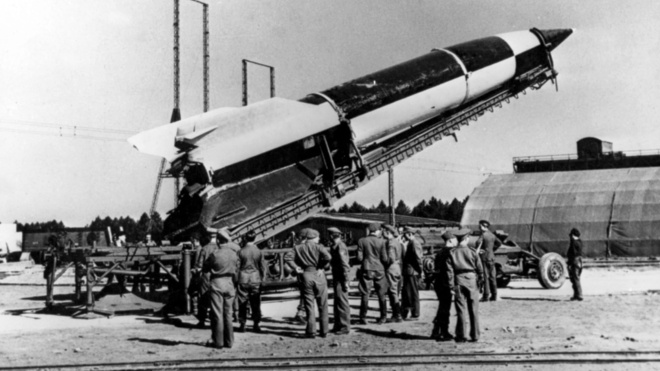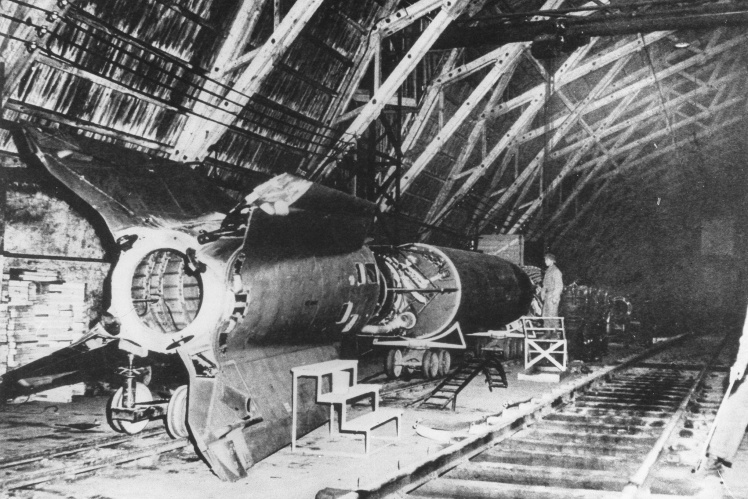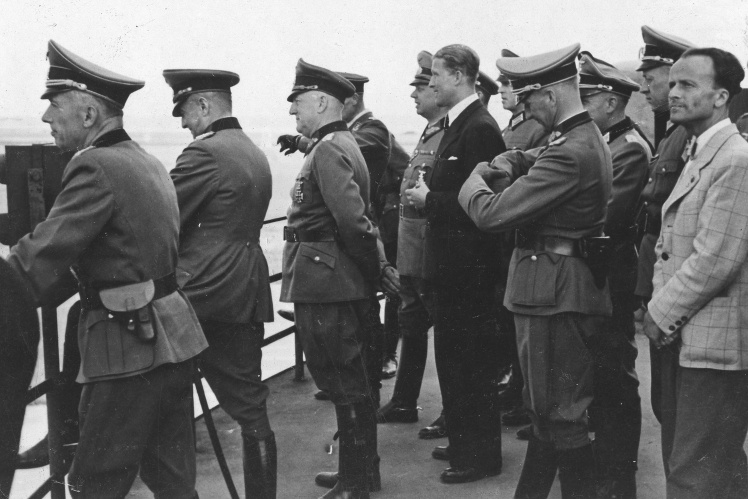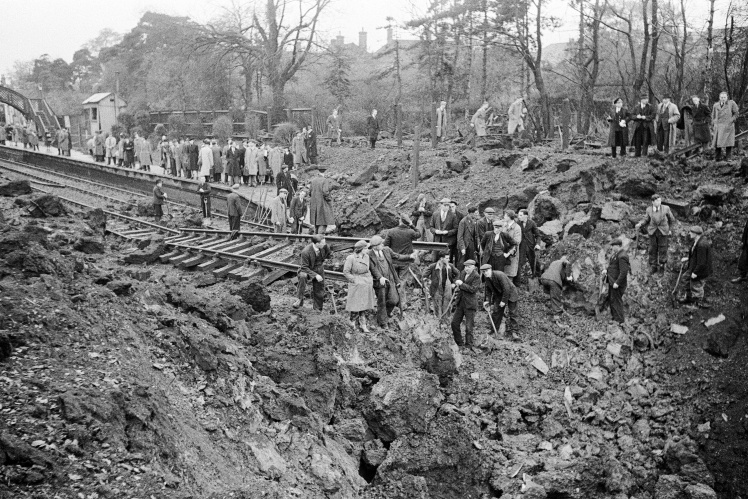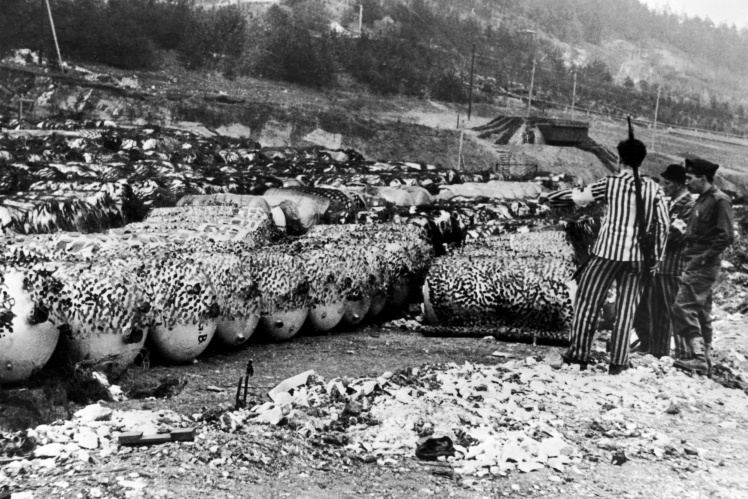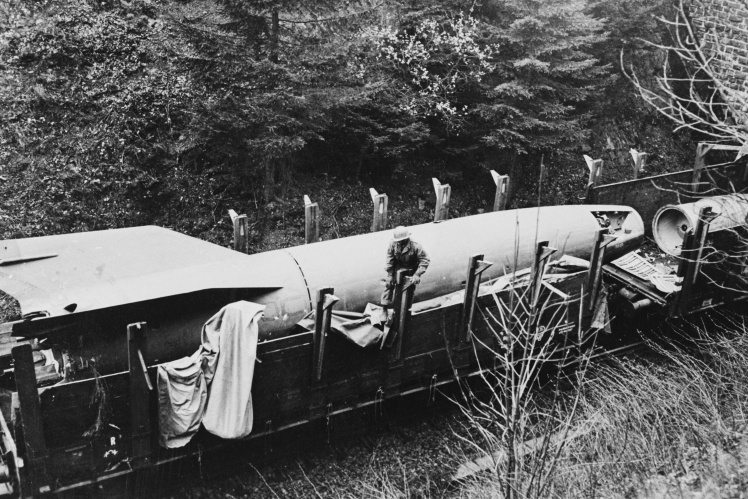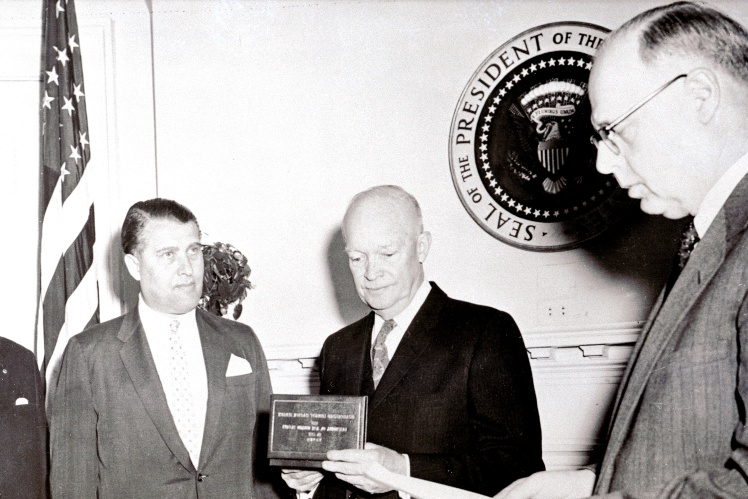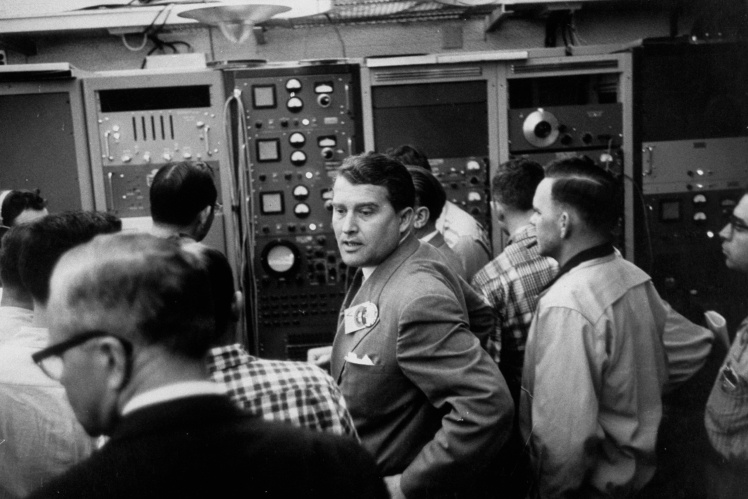The Nazis launched the missile program almost immediately after coming to power
According to the Treaty of Versailles of 1919, following the results of the World War I, Germany was forbidden to have most of the then types of weapons and engage in their development. However, missile technology was not included in this list, at that time it simply did not exist.
In 1933, the Nazis launched a program to develop missiles on liquid fuel. Its leader was a young talented physicist Wernher von Braun, who was finishing his doctoral dissertation in space engineering. The military was interested in the fact that his missiles did not run on petroleum products, with which Germany was in short supply, but on a mixture of liquid oxygen and ethanol, i.e. alcohol.
In 1936, in a remote region on the coast of the Baltic Sea, near the small town of Peenemünde, construction began on a secret advanced missile research center with a proving ground. Already the next year, von Braun moved here with his team of scientists. Here he continued work on the missiles of the A series, i.e. Aggregat. His greatest success would be the A4 ballistic missile, which would later become known as the V-2. But at the end of 1937, after a series of unsuccessful launches of its predecessor A3, Wernher decided to postpone work on the missiles of the next series.
Missile launcher at the base in Peenemünde, 1940 Wernher von Braun (in suit, center) with Nazi generals during missile tests, 1940s.
Getty Images / «Babel'»
After the failure in Britain, Germany forced the development of the latest missiles
From September 1940 to May 1941, Germany conducted the largest air offensive campaign in world history against Britain. However, it was not possible to break the resistance of the British, the German aviation was never able to achieve dominance in the air. In the spring of 1942, Britain began massive bombing of German industrial cities.
Work on A4 missiles in Peenemünde was resumed in 1939, and in 1942 concrete results were already demanded from von Braun. In the same year, tests of a technological novelty began, which had no analogues in any of the countries. The missile developed a supersonic speed of almost 6 000 kmph, and could carry about a ton of explosives, and the flight range exceeded 300 kilometers. One of the most revolutionary technological solutions was the automatic guidance system, which was adjusted by gyroscopes and stabilizers installed on the missile. The first successful missile launch took place on October 3, 1942. It perfectly repeated the given trajectory, reached a height of 83 km and flew 193 km.
The first successful launch of the A4 (V-2) missile from the Peenemünde test site on October 3, 1942.
Getty Images / «Babel'»
Hitler was satisfied with the result, and at the end of November 1942 he signed an order to start mass production of new weapons. But he was not out of the woods yet. Almost all further testing was unsuccessful. The missiles exploded at launch (or in flight) and often deviated from the given trajectory. It took von Braun almost a year and a half to correct the shortcomings. Finally, in June 1944, a new breakthrough occurred. The missile rose to a record height of 174.6 km, crossing the Karman line, and became the first artifact to travel into space.
Footage of the failed launch of an A4 (V-2) rocket from the Peenemünde proving ground, 1940s.
The Germans could not delay any longer, in the summer of 1944 the situation in Germany was extremely bad. The Allies crowded it on the Eastern Front and after the successful landing in Normandy opened a second front in Western Europe. Then Nazi propaganda informed about the creation of a secret "retaliatory weapon". Another novelty began to be launched in Britain — cruise missiles. They were called V-1, hinting that this is just the beginning.
Despite numerous casualties and destruction, the new superweapon did not change the course of the war in favor of Germany
The first combat launches of ballistic missiles — which had already been renamed V-2 — were carried out on September 7, 1944. The goal was Paris. However, both missiles exploded in the air. The next day, Britain was already struck from the launch areas near The Hague. One of the missiles reached London. It left behind a 10-meter-diameter crater, killed three and injured 22 people. To prevent panic, the British government initially tried to attribute everything to a gas explosion. So later, when the shelling became more frequent, the British began to ironically call V-2 "flying gas pipelines."
As a result of the attack on the town of Tewkesbury in central England, almost 900 people were left without homes, on January 20, 1945 On November 27, 1944, 126 people, including 26 military personnel, were killed in an V-2 attack on Antwerp, Belgium Shell crater after an V-2 attack on a railway station in London, November 7, 1944.
Getty Images / «Babel'»
From September 1944 to March 1945, Germany managed to launch more than 3 000 ballistic missiles at the cities of Britain, Belgium, France and the Netherlands. If the anti-aircraft missile system quickly managed to track and shoot down V-1 missiles, it was powerless against ballistics.
"V-2 was a weapon of intimidation. Missiles rained down from the sky suddenly, without any warning," recalled one London resident in 1944. According to various estimates, from five to nine thousand people died from the attacks, and more than 30 thousand buildings were destroyed.
But even more people died during the production of V-2. In order to organize their mass production, the Nazis used the slave labor of concentration camp prisoners. They worked around the clock in extremely difficult conditions in secret underground factories. According to rough estimates, almost 20 000 prisoners died there.
Former prisoners of the Dora-Mittelbau concentration camp in central Germany show American soldiers the fuel tanks used during the production of V-1 and V-2, 1945 An American soldier near a captured V-2 at the entrance to the secret underground Mittelwerk rocket factory in central Germany, June 1945.
Getty Images / «Babel'»
However, the new "miracle" weapon could not influence the course of the war. Von Braun never had time to fix all the flaws, so V-2 lacked accuracy and reliability. And the cost was too high. Each V-2 cost approximately 100 000 Reichsmarks. And the economy of Nazi Germany teetered on the brink of collapse. Allied airstrikes on industrial centers of missile production were added to this.
Wernher von Braun sent the USA into space
At the beginning of 1945, the front gradually approached Peenemünde. The German engineer-inventor was a very valuable trophy for Britain, the USA, and the USSR. Von Braun called his colleagues to a meeting, where they fundamentally decided to surrender to the Americans. In April 1945, shortly before his suicide, Hitler ordered the liquidation of all German specialists involved in the development of missiles. Upon learning of this, von Braun, along with his brother Magnus and several engineers, fled south to cross the Alps into Austria and surrender to American forces. On May 2, 1945, a private in the US 44th Infantry Division was riding his bicycle when a man ran up to him and shouted in broken English: "My name is Magnus von Braun. My brother created the V-2. We want to surrender."
Wernher von Braun with his brother and colleagues among American soldiers, May 2, 1945. Shortly before that, von Braun got into a car accident and broke his arm.
Getty Images / «Babel'»
The Soviet Union got the research center and training ground in Peenemünde, as well as missile production plants, engineering documentation and several other missile engineering specialists. In 1957, the USSR even managed to overtake the USA in the arms race and dominance in space for a while, namely, it successfully tested the worldʼs first intercontinental ballistic missile and was the first to launch an artificial satellite into Earthʼs orbit.
Soviet ballistic missiles, developed on the basis of V-2, on parade in Moscow, November 7, 1957.
Getty Images / «Babel'»
Wernher von Braun was secretly transported to the United States along with several hundred of his fellow engineers. In the early 1950s, von Braun became the chief director of the United Statesʼ ballistic weapons program. In 1958, the rocket he developed put the first American satellite into orbit, and von Braun was transferred to NASA. He headed the newly created Marshall Space Flight Center. He became the chief architect of the super-heavy "Saturn V" launch vehicle, which in 1969 sent the first people to the moon. Von Braun received American citizenship, international fame, many awards and entered the ranks of NASAʼs top management.
Wernher von Braun receives the Presidential Medal for Distinguished Public Civilian Service from then-Chief of the White House Dwight Eisenhower, 1959 Wernher von Braun in the command center at Cape Canaveral during a rocket launch, 1958 Wernher von Braun (right) shows mock-ups of American ballistic missiles developed under his leadership on October 27, 1956.
Getty Images / «Babel'»
Wernher von Braun (already in the States), of course, said that he was forcibly dragged into the Nazi Party, that he considered Hitler "crazy" and could not help the prisoners who worked in the factories under his leadership. But despite all the postwar merits, some NASA employees ironically called him "Professor h. c." At the same time, they did not mean "honorauble" professor, as the Latin abbreviation honoris causa (h.c.) is usually deciphered, but "Hitlerʼs" — that is, hitleris causa.
Donate to the Armed Forces of Ukraine, who have learned to shoot down Russian ballistic missiles! And independent journalism repels the attacks of Russian propaganda, and your support will not hinder us either: 🔸 in hryvnia , 🔸 in cryptocurrency , 🔸 Patreon , 🔸 PayPal: [email protected]
